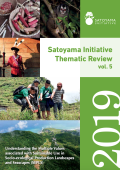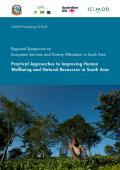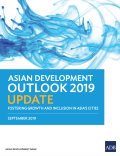Projections estimate that between 2000 and 2050, the world population will grow 50 percent and global energy and materials use will grow 300 percent. Therefore, the strategic importance of materials is causing many people to look carefully at all aspects of the material lifecycles that comprise our industrial practices and consumer habits.
This report discusses materials management—how best to provide for human needs and prosperity while using fewer materials, reducing toxic products, and recovering more of the materials used. It includes background information on material usage within the United States, describes challenges related to sustainability and environmental impacts, and provides an analytic framework for materials management. The report also provides three key recommendations for achieving sustainable materials management:

Based on preliminary identification of environmental priorities, this report explores selected topics that aim to inform decision-making in the Yucatán Peninsula. A general context of integrated coastal zone management (ICZM) is used to explore issues, constraints, and potential solutions. The role of geomorphology is examined with a view to identifying how shore management plans can contribute to improved coastal management. The report also demonstrates how rigorous economic tools can provide insights into the economic impacts of extreme climate events and of economic losses from environmental degradation. It concludes with options for consideration in the years ahead in relation to pilot projects and interventions, technical assistance, institutional strengthening, and monitoring, evaluation, research, and development.

This report provides an account of the multiple values of nature associated with socio-ecological production landscapes and seascapes (SEPLS). It presents a series of in-depth case studies from Latin America, Africa, Asia, and Europe, which highlight the dilemmas between conservation and development as well as discuss the development and monitoring of community-based projects. The case studies also explore how different values of nature influence the decisions and actions of different stakeholders and how this affects the use and distribution of nature’s contributions to people.

A ‘Regional Symposium on Ecosystem Services for Poverty Alleviation’ was held on 13–14 March 2018 in Kathmandu. The symposium highlighted the critical role of ecosystem interactions across spatial scales in delivering services, particularly to the poor who are highly dependent on natural resources. It further showcased potential ecosystem services governance pathways to achieving wellbeing for the poorest, and environmental sustainability through research and knowledge programmes in South Asia.

Growth in developing Asia is moderating but remains robust. As global trade slows and investment weakens, regional growth forecasts are trimmed from Asian Development Outlook 2019 by 0.3 percentage points for 2019 and by 0.1 points for 2020 compared to April forecasts. Developing Asia is also urbanising rapidly, promising job creation and economic growth. As cities expand over municipal boundaries and become more connected with one another through flows of goods, services, and people, better planning coordination is needed at all levels of government. Realising their promise requires a holistic agenda for cities.
